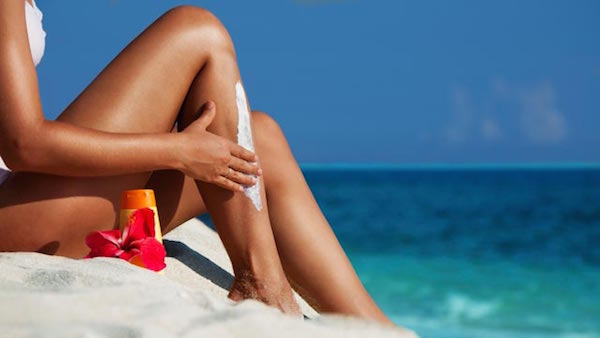We are thrilled to have Dr. Angela back, especially with the topic she is covering today: sunscreen. We’re in the heart of summer and sunscreen is of utmost importance, as we all know. Keep reading for some great suggestions and tips…

We are in the midst of summer and therefore burn season. So, now is the time to protect your skin from skin cancer and early aging. As an industry, our understanding of skin protection has grown significantly in the last 5 years. Based on this knowledge, the FDA has suggested guidance on testing and labeling to the manufacturers to accurately describe coverage. These suggestions are useful as a guide in choosing the best sunscreen.
- SPF above 50 does not significantly improve your coverage. See Sunscreen, Is It Enough blog.
The FDA suggested making the maximum SPF that is able to be used on labels is 50+. Unfortunately, we still see products labeled SPF 100 or higher giving the misleading impression that the coverage is better or will last longer.
- Choose “Broad Spectrum” coverage.
The ability to use label “broad spectrum” is limited to those products that cover both UV A and UV B rays. Many sunscreens only filter UVB rays, the ones that cause sunburns. You want broad spectrum coverage because UVA rays increase the risk of skin cancer.
- Sunscreens are not really waterproof.
FDA suggests that products cannot claim to be are “waterproof” or “sweatproof”. They can be water resistant.
- Sunscreens can be water resistant.
Water resistance claims on the product’s front label must tell how much time a user can expect to get the declared SPF level of protection while swimming or sweating, based on standard testing. Two times are permitted on labels: 40 minutes or 80 minutes.
- You can get burned right after applying sunscreen.
Sunscreens cannot claim protection immediately on application (for example, “instant protection”) or protection for more than two hours without reapplication, unless they submit data and get approval from FDA.
- So apply sunscreen before you go outside.
- Also,reapply sunscreen at least every 2 hours, more often if you’re in the water.
- Spray sunscreens frequently do not get applied well enough to the skin to be able to provide the SPF that is on the label.
For sunscreen spray products, the FDA has not been able to establish effectiveness or determine if they present a safety concern if inhaled unintentionally. More studies are needed.
- Manufacturers cannot make claims that sunscreen products cannot be identified as “sunblocks”.
Sunblocks are physical blocks of the sun and use titanium or zinc oxide. So look for these ingredients.
In summary, look for a product that has zinc or titatium to give a physical block in addition to a sunscreen. The SPF should be above 30, but does not give you significant extra coverage above 50. Creams or lotions are better than sprat because they are able to be consistently applied to the skin in a manner that will provide the SPF that is on the label. No matter which product you choose, apply before you are in the sun and at least every 2 hours. Enjoy the summer!
.
Image borrowed from TravelIndia
